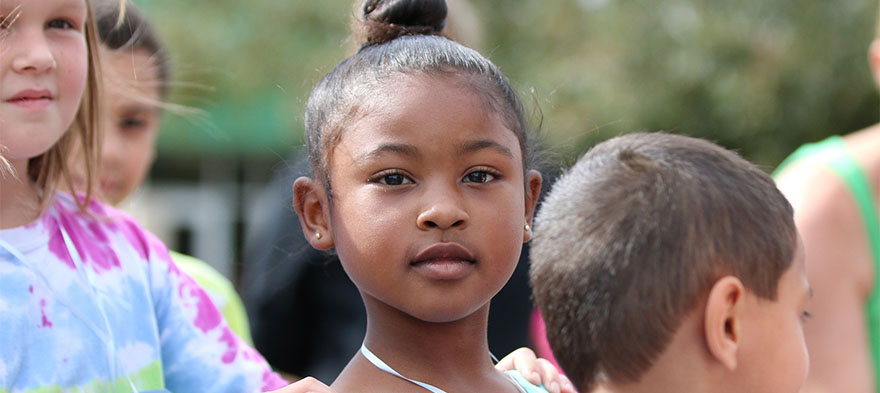
Jun 14, 2016 12:00:00 AM
If the American majority wanted integrated schools, we would already have them. Instead, many white families select schools in ways that create social distance between their children and other races. This leaves people of color who love our children to wonder how long we can chase them and continue to further the insulting delusion that Black student achievement can only be had in proximity to Whiteness.Online magazine Slate dedicated a week to the issue of race and education, pointing out that, for the first time in history, children of color make up a majority of the school system. In addition to being over 50 percent people of color, the system is also 50 percent “poor” for the first time in history, with “poor” defined as qualifying for free and reduced lunch. So what are the political and educational consequences of a system that is Blacker, browner and poorer? Will middle-class America adequately fund the system or will inequity worsen? Today, America spends about $1,500 less per pupil on poor students than on wealthier ones and about $2,000 less per pupil on poor students who are Black or Hispanic. [pullquote position="right"]Will middle-class parents of color stay with the system or leave?[/pullquote] Today, the parents of nearly 10 million students have opted out of the traditional public school system for private schools, charter schools and home-schooling. Dozens of states now allow the use of public tax dollars for private education through vouchers or education savings accounts; 43 states have charter schools serving nearly three million children, more than half of them students of color; homeschooling is expanding, especially among higher-income African-Americans. Will the burden to improve a system serving more and more disadvantaged students be too much? Efforts to reform public schools have largely focused on the bottom 5 to 10 percent of schools, mostly in inner cities. With poverty spreading to suburbs and continuing in many rural communities, educational underperformance will be more widespread. Will we define down success or take reform to the suburbs? A new blog for suburban and rural parents nationwide is asking. Diversity in teaching is another challenge for a changing system. Will college-educated adults of color choose to work in the field? Today, only 18 percent of America’s teachers are people of color and the number of education majors is also down suggesting that interest in the field is waning. One Philadelphia principal is working to change that but the low salaries and low stature of teaching is a problem for higher-educated people of color. All of this change renders somewhat irrelevant a recent debate among education reformers asking if the school reform movement can still accommodate White conservatives advocating choice and Black activists focused on structural racism. The fact is, schools are changing and the movement has to adapt. As Muhammad Ali might say: Get used to it.
Peter Cunningham is the founder of Education Post and serves on its board. He served as Assistant Secretary for communications and outreach in the U.S. Department of Education during the Obama administration’s first term. Prior to that he worked with Arne Duncan when he was CEO of the Chicago Public Schools. Peter is affiliated with Whiteboard Advisors, a DC-based education policy, research and communications firm. He serves on several non-profit boards, including Oakland-based Great Schools, which provides school quality information to parents through a national online platform, The Montessori School of Englewood, a Chicago public charter school, Manufacturing Renaissance, a career education program that trains public high school students for jobs in manufacturing, Unbounded, an organization supporting teachers in schools that are transitioning to higher standards, and Foolproofme.com, which is focused on financial literacy for students. Peter founded Cunningham Communications, serving public, private and nonprofit clients, worked for political consultant David Axelrod, and was a senior advisor and speechwriter for Chicago Mayor Richard M. Daley. A native New Yorker, Peter began his career as a journalist with small weekly newspapers in New York. He earned an M.S. in Journalism from Columbia University and a B.A. in philosophy from Duke University. He is married to artist Jackie Kazarian, and they have two adult children who are proud graduates of the Chicago Public Schools. Peter joined the Education Post board in 2018 after stepping down as the organization's Executive Director. Meet our board →
The story you tell yourself about your own math ability tends to become true. This isn’t some Oprah aphorism about attracting what you want from the universe. Well, I guess it kind of is, but...
If you have a child with disabilities, you’re not alone: According to the latest data, over 7 million American schoolchildren — 14% of all students ages 3-21 — are classified as eligible for special...
The fight for educational equity has never been just about schools. The real North Star for this work is providing opportunities for each child to thrive into adulthood. This means that our advocacy...
Your donations support the voices who challenge decision makers to provide the learning opportunities all children need to thrive.
Ed Post is the flagship website platform of brightbeam, a 501(c3) network of education activists and influencers demanding a better education and a brighter future for every child.
© 2020–2024 brightbeam. All rights reserved.
Leave a Comment